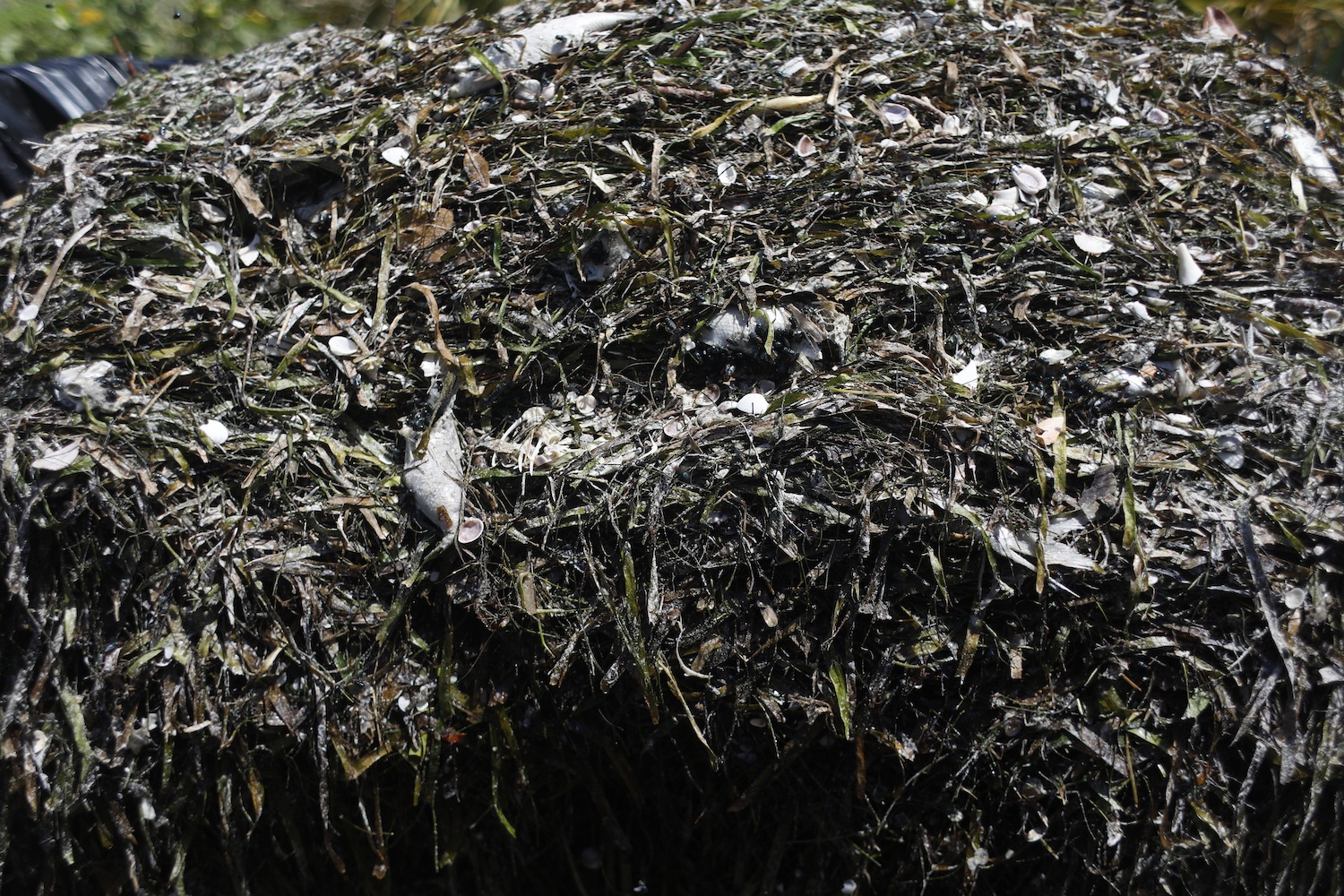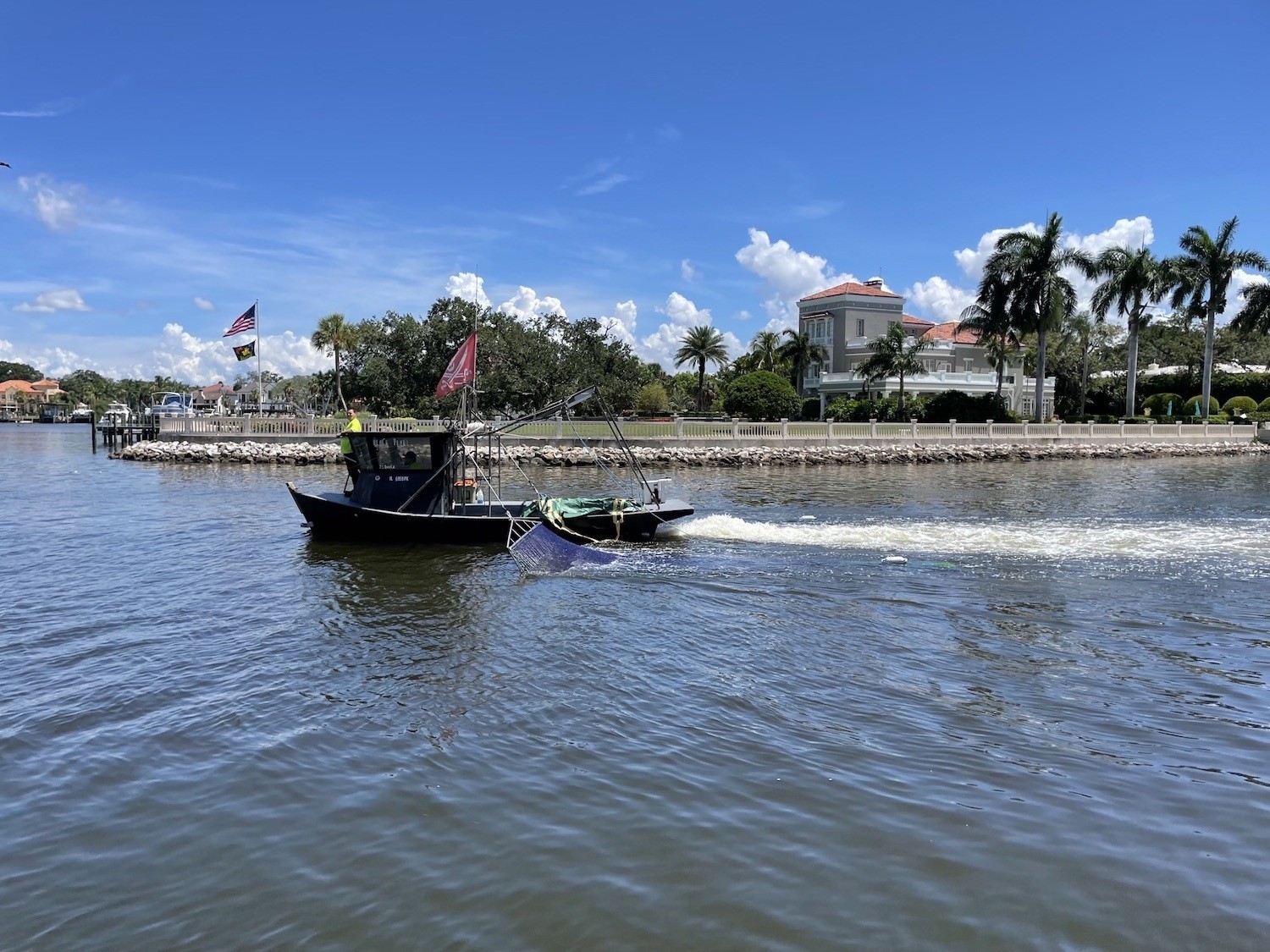By Jessica Fu
Oyster harvesting is on pause in Tampa Bay, recreational fishermen have cut their season off early, and shrimpers have taken on gigs trawling for dead fish.
In late March, Florida officials began to discharge contaminated wastewater from an abandoned fertilizer plant in Florida called Piney Point into Tampa Bay at an alarming rate of up to 22,000 gallons per minute. The release—meant to relieve pressure on a leaking reservoir that threatened to flood neighboring communities—ultimately lasted 10 days. It also introduced high levels of nutrients including nitrogen, phosphorus, and ammonia into the harbor.
Now those contaminants appear to have contributed to a massive harmful algal bloom, colloquially referred to as “red tide,” that has blanketed coastal waters and swept thousands of dead marine animals onto the shores of Florida’s western beaches—dealing a blow to the region’s fishing community and raising calls from environmental advocates for stricter oversight of the state’s fertilizer industry.
The Gulf Coast is quite familiar with red tide, which is caused by a toxic algae species called Karenia brevis. The phenomenon occurs on an annual basis, but the current algal bloom’s timing and magnitude are abnormal: Not only is red tide occurring weeks earlier than expected, but officials in the region are also concerned about the sheer scale of ecosystem damage they’re witnessing this year.

A large garbage container designated for collecting dead marine life from the Red Tide bacteria, is seen in the Pass-A-Grille community on July 21, 2021 in St Pete Beach, Florida.
“While minor fish kills have been observed in years with less extreme blooms, the real indicator this year in the past two weeks has been the excess amount of fish kills that we’ve been noticing,” said Joe Whalen, communications director for the Tampa Bay Estuary Program, an intergovernmental organization dedicated to restoring the bay. According to the latest estimates, clean-up efforts have collected 1,624 tons of “red tide-related debris” so far, a number that includes marine life, seaweed, and sand debris.
Researchers at the Estuary Program believe that the scope of this year’s disaster can be directly linked to the Piney Point discharge in the spring.
“The 200 tons of nitrogen that entered the bay during that discharge event provides the algae with a lot of food, important food that it needs to grow,” Shalen said. “While we understand that red tide is naturally occurring, that excess nitrogen that resulted from the discharge definitely serves to exacerbate the bloom.”
This has led to dire consequences for the local fishing industry. Local oyster harvesting has been put on pause, as has most recreational fishing. And some shrimp farmers—who have trawling equipment but nothing to catch due to the algal blooms—have been hired by a local disaster services contractor to scoop dead wildlife out of the water instead.

Due to the algal blooms, some shrimp farmers have been hired by a local disaster services contractor to scoop dead wildlife out of the water instead.
Jaclyn Lopez, Center for Biological Diversity
Public health experts stress that any seafood you find at the grocery store is safe to eat, since seafood harvesting from red tide-affected areas is on pause. However, for those eaters who are still trying to harvest shellfish recreationally, they are stressing that any local catches right now can be severely toxic to humans, even after being frozen or cooked at a high heat.
“In the Tampa area, any bivalve—clams, oysters, mollusks—will accumulate toxins [where there is red tide],” said Barbara Kirkpatrick, an expert on the public health impacts of red tide and executive director for the Gulf of Mexico Coastal Ocean Observation System, an organization that monitors the Gulf. “These toxins are really resistant to heat and cold. People think, ‘Well, I’ll just steam these clams and we’ll be OK.’ That doesn’t denature or deactivate the toxin.”
Dustin Pack, a fly fishing guide and board director for local conservation group Tampa Bay Waterkeeper, said that the red tide event cut his business season short by over a month. Pack says that algal blooms put the industry in a difficult situation, of wanting to both ring the alarm on an environmental crisis while also hoping to preserve tourism in the area.
“These toxins are really resistant to heat and cold. People think, ‘Well, I’ll just steam these clams and we’ll be OK.’ That doesn’t denature or deactivate the toxin.”
“You don’t want to stay silent on this stuff because you don’t want this stuff to happen. But then on the other side, you have guys whose livelihoods depends on the water. If you’re telling everybody in the world that the fishery is dying, then nobody wants to come here. I mean, that’s the price you have to pay in the short term, which sucks to get it right in the long run.”
For local environmental advocates, the red tide event has underscored the necessity of strongly regulating the fertilizer industry. Fertilizer is big business in Florida, which supplies 80 percent of the country’s phosphate, a key ingredient in the product. Phosphate processing results in enormous amounts of radioactive byproduct, which then is piled into tall stacks that form barriers around wastewater ponds. When these reservoirs are breached, this wastewater can threaten to flood residential communities and freshwater sources. That’s what happened at Piney Point in the spring, which left local officials no choice but to relieve pressure on the stacks by discharging wastewater into the bay.
In late June, a coalition of conservation groups sued Florida Governor Ron DeSantis and state environmental regulators, alleging that they have failed to properly manage defunct fertilizer facilities. The plaintiffs claimed that officials not only ignored multiple warnings about the structural integrity of the stacks at Piney Point, but that they are still failing to adequately regulate fertilizer facilities. For example, advocates point to an ongoing state permitting process that would allow another fertilizer plant a few miles inland from Tampa Bay to expand its byproduct storage capacity across 230 acres.
“This should be a wake-up call for everybody that we can’t continue business as usual,” said Jaclyn Lopez, Florida director and senior attorney for the Center for Biological Diversity, a plaintiff in the lawsuit. “There should be real reckoning, there should be accountability for the federal or state agency that was supposed to manage Piney Point, and everybody involved in its failure.”
The post Months after the Piney Point wastewater disaster, a massive red tide has killed 1,600-plus tons of marine life—a huge blow to the local fishing community appeared first on The Counter.
This article was originally published by The Counter.
